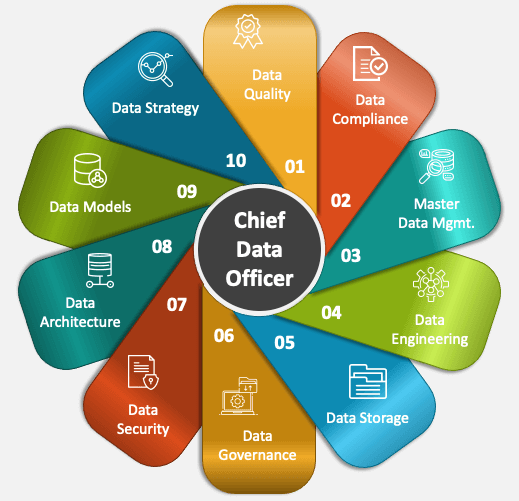Data Governance key roles
Data Governance key roles are the everyday actors of a Data Governance Strategy success.
1. Chief Data Officer
This is probably the most important role in any organisation that want to deal with data in an efficient way. The Chief Data Officer is the strategic leader of Data Governance, he is generally in charge of the company Data Strategy. From a global point of view, he supervises the Data Quality, Security, Ethics and Compliance efforts of the organisation data.
2. Data Governance Manager
The Data Governance Manager acts as the Chief Data Officer second, he is the operationnal leader of Data Governance. He acts on the field, where he is responsible of Data Governance policies, Data Stewards coordination, standards and processes. This role should really be seen as a global coordinator of Data Governance initiatives and bodies around the company.
3. Data Owner
Accountability on data belonging to a domain or a specific perimeter is defined by the role of Data Owner. Indeed, these people should validate definitions, usage and sharing patterns regarding data inside their scope. They also are accountable, with the help of their Data Stewards, for the Data Quality and the respect of data policies.
4. Data Steward
The Data Steward is responsible of the correct usage and quality of data at a business level. They define business rules, they measure and improve Data Quality, they document data on a daily basis. The Data Stewards act as contact points and business knowledge referents for other people wanting to access their domain data.
5. Data Catalog Manager
This last role is less widespread than the others, as companies often struggle to find a good organisation around the Data Catalog. Theoretically, the Data Catalog Manager is responsible of the Data Catalog filling, management and organisation. With the help of technical teams and Data Stewards, he must ensure the Data Catalog stays up-to-date and brings value by its content.




